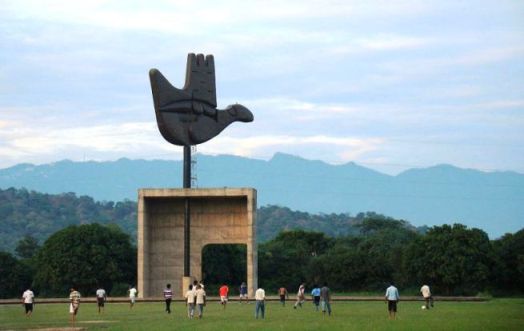French President Francois Hollande began his visit to India from the North, from the city of Chandigarh, designed over 60 years ago by the Franco-Swiss architect Le Corbusier. An oasis of peace and discipline in a country where usually dominate chaos and confusion.
The project he was given in ’47 by Indian Prime Minister Nehru after independence; Le Corbusier was to build a symbol of hope, the idea of modern India, the ideal city. His urban plan included many green areas between the buildings; it was he who built most of the public buildings, such as the Palace of Assembly.
The plant resembles the human body, with government and administrative buildings in the head, the productive and industrial structures in the stomach, and residential on the outskirts of the trunk, as if they were autonomous islands. A project that was the result of studies carried out by the architect during his trips to Europe, and who dreamed of a city on a human scale. His famous monument in the center, the big hand stretched toward the sky, the Open Hand Monument, a symbol of peace.
A city conceived at the time for half a million people, today the Indian population is growing exponentially and serve new areas, but those who live here, it is still good. There’s lots of greenery, it’s clean, and the people are peaceful and more civilized, than the rest of India.
